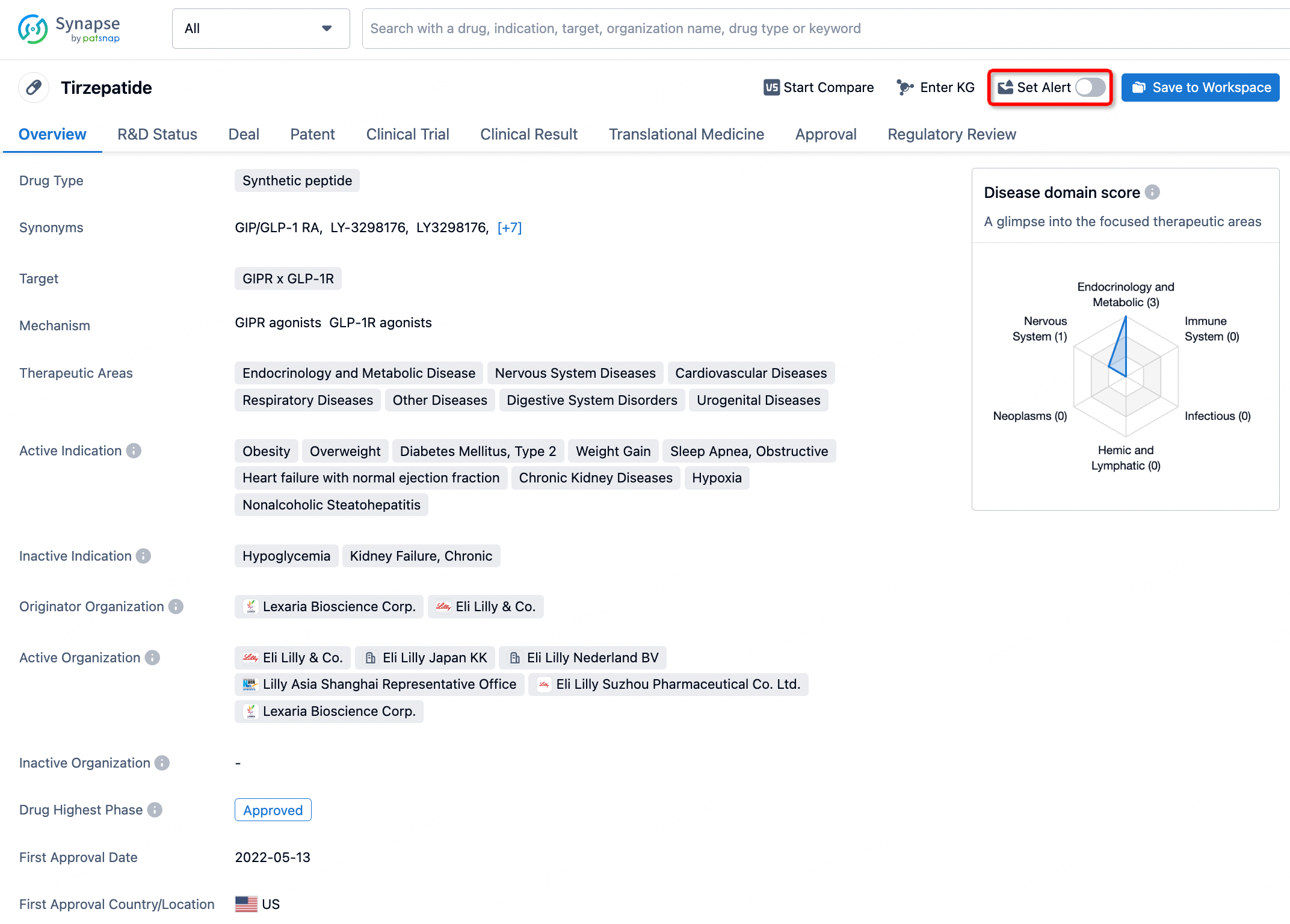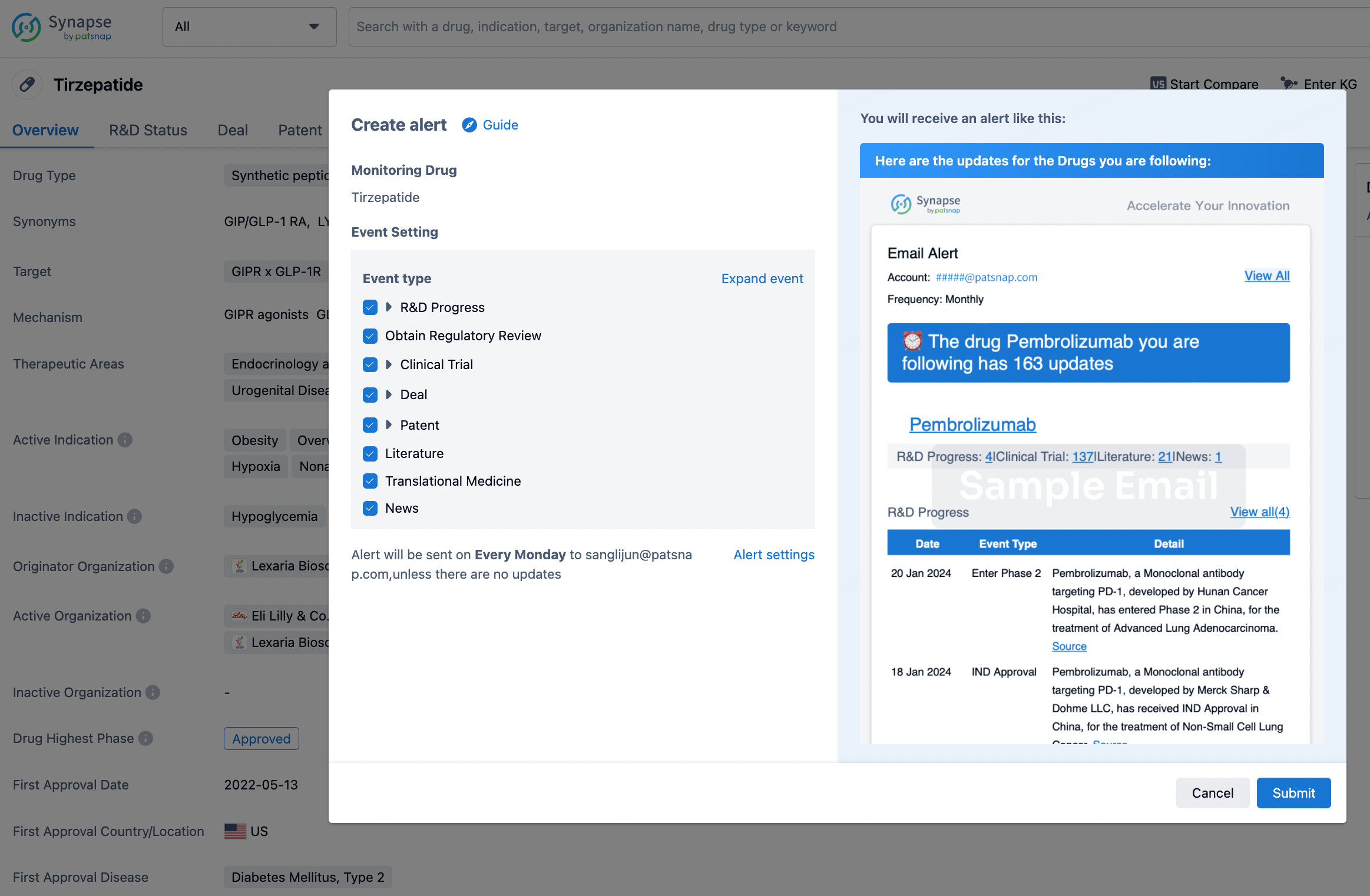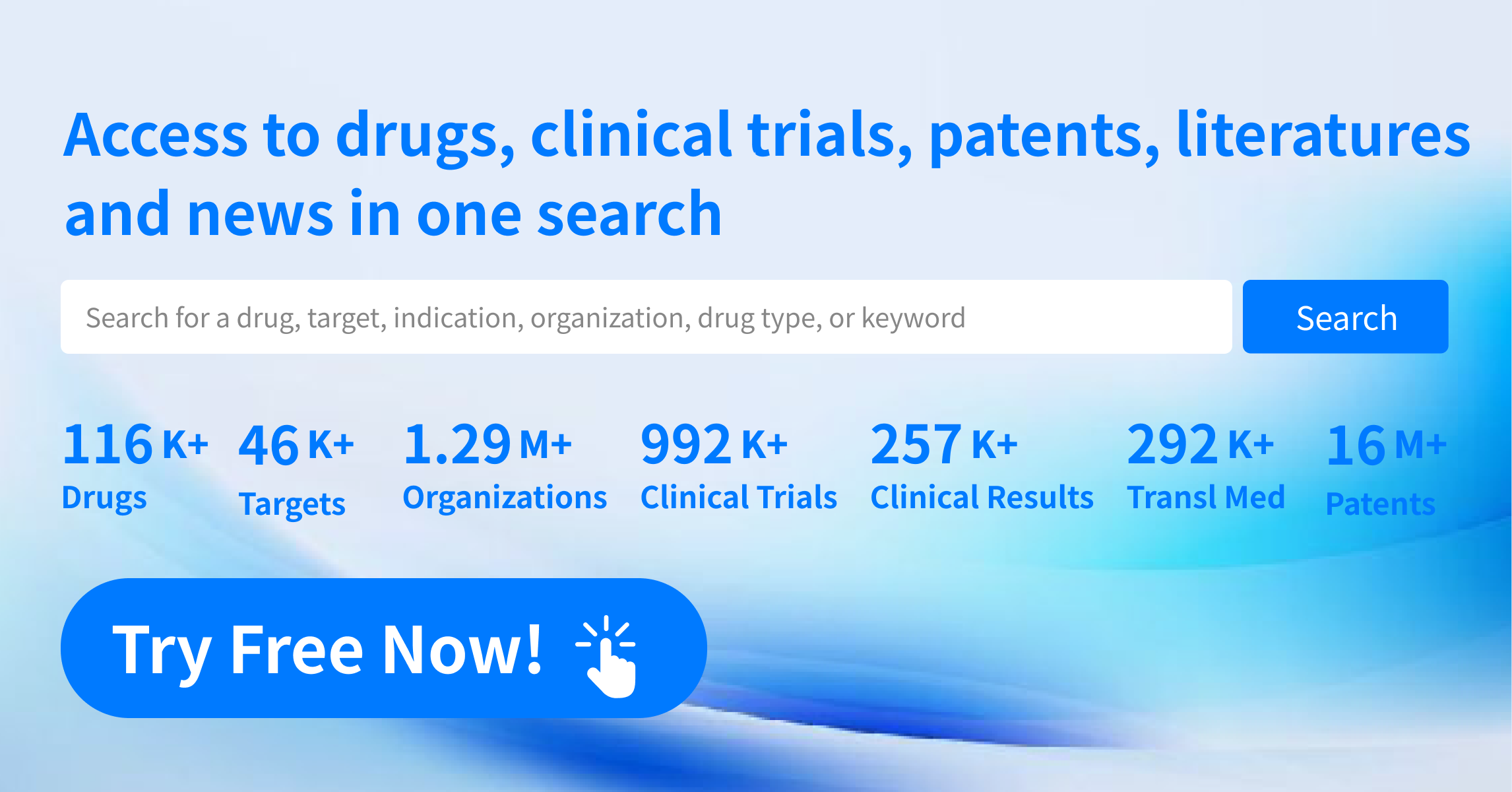Request Demo
What is Ofatumumab used for?
14 June 2024
Ofatumumab, marketed under brand names such as Arzerra and Kesimpta, is a groundbreaking monoclonal antibody designed to target specific antigens in the body. Developed collaboratively by Genmab and GlaxoSmithKline (GSK), this drug has garnered significant attention in the medical field for its applications in autoimmune and oncological conditions. Ofatumumab primarily targets the CD20 molecule present on the surface of B cells, making it a crucial therapeutic option in treating diseases characterized by abnormal B cell activity. Initially, Ofatumumab received approval for the treatment of chronic lymphocytic leukemia (CLL). More recently, it has been repurposed and approved for the treatment of relapsing forms of multiple sclerosis (MS), expanding its utility in clinical settings. Research and clinical trials concerning Ofatumumab continue to evolve, promising further advancements and potentially new indications in the future.
Ofatumumab Mechanism of Action
Understanding the mechanism of action of Ofatumumab is pivotal to appreciating its therapeutic potential. Ofatumumab is a fully human monoclonal antibody that specifically targets the CD20 antigen found on the surface of B cells. CD20 is a transmembrane protein involved in the regulation of B cell activation, proliferation, and differentiation. By binding to CD20, Ofatumumab induces B cell depletion through several mechanisms.
Firstly, Ofatumumab triggers antibody-dependent cellular cytotoxicity (ADCC), a process whereby immune effector cells such as natural killer (NK) cells recognize and destroy the antibody-coated B cells. Secondly, it initiates complement-dependent cytotoxicity (CDC), wherein the binding of Ofatumumab activates the complement system, leading to the formation of membrane attack complexes that lyse the B cells. Lastly, Ofatumumab directly induces apoptosis, or programmed cell death, in the targeted B cells. These combined mechanisms result in the rapid and sustained depletion of B cells, which is beneficial in conditions like CLL and MS, where aberrant B cell activity is a hallmark of disease pathology.
How to Use Ofatumumab
The administration of Ofatumumab varies depending on the specific indication it is prescribed for. For chronic lymphocytic leukemia, Ofatumumab is typically administered as an intravenous infusion. The infusion schedule may vary but often involves an initial, intensive phase followed by maintenance doses. The onset of action in terms of B cell depletion can be observed relatively quickly, often within days to weeks of the initial infusion.
For relapsing multiple sclerosis, Ofatumumab is administered as a subcutaneous injection, which can be self-administered by the patient. The initial dosing regimen involves three weekly injections, followed by monthly maintenance doses. This method of administration offers the advantage of convenience and ease, allowing patients to manage their treatment at home. The therapeutic effects, particularly the reduction in relapse rates and slowing of disease progression, become apparent over the course of several months of consistent treatment.
Patients receiving Ofatumumab are typically monitored regularly for signs of efficacy as well as potential adverse effects. Blood tests and imaging studies may be conducted periodically to assess the response to therapy and to detect any potential complications early.
What are Ofatumumab Side Effects
Like all medications, Ofatumumab is associated with a range of potential side effects, and it is crucial for patients and healthcare providers to be aware of these to manage them effectively. Common side effects of Ofatumumab include infusion-related reactions, which may occur during or shortly after the administration of the drug. Symptoms of such reactions can range from mild (fever, chills, rash) to severe (hypotension, bronchospasm), necessitating close monitoring during and after infusions.
Infections are another significant concern, given the immunosuppressive action of Ofatumumab. Patients are at an increased risk of bacterial, viral, and fungal infections, and it is essential to promptly address any signs of infection. In some cases, prophylactic antimicrobials may be prescribed to mitigate this risk.
Other notable side effects include neutropenia (a decrease in neutrophils, a type of white blood cell), which can further increase infection risk, and hepatotoxicity, which necessitates regular liver function monitoring. Hypogammaglobulinemia, a condition characterized by low levels of immunoglobulins, may also occur, leading to an increased susceptibility to infections and requiring immunoglobulin replacement therapy in some cases.
Contraindications for the use of Ofatumumab include known hypersensitivity to the drug or any of its components. Caution is also advised in patients with existing severe infections, as the immunosuppressive effects of Ofatumumab could exacerbate these conditions. Patients with a history of hepatitis B should be screened and monitored closely, as there is a risk of reactivation with Ofatumumab therapy.
What Other Drugs Will Affect Ofatumumab
Drug interactions are an important consideration when prescribing Ofatumumab. Concurrent use of other immunosuppressive agents may potentiate the immunosuppressive effects of Ofatumumab, increasing the risk of infections and other related complications. For instance, combining Ofatumumab with other monoclonal antibodies, chemotherapy agents, or corticosteroids requires careful consideration and close monitoring.
Live vaccines are contraindicated during Ofatumumab treatment due to the risk of vaccine-induced infections. Patients should complete any required vaccinations at least four weeks prior to initiating Ofatumumab therapy. Inactivated vaccines may be administered, but it is essential to recognize that the immunogenic response may be diminished due to B cell depletion.
It is also noteworthy that Ofatumumab can interact with other drugs metabolized by the liver. Medications that inhibit or induce cytochrome P450 enzymes may alter the metabolism and, consequently, the efficacy and toxicity of Ofatumumab. Therefore, a thorough review of the patient’s medication list, including over-the-counter drugs and supplements, is necessary to identify and manage potential drug interactions.
In conclusion, Ofatumumab stands as a potent therapeutic option for conditions characterized by aberrant B cell activity, such as chronic lymphocytic leukemia and relapsing multiple sclerosis. Its targeted mechanism of action, combined with its relative ease of administration, offers significant benefits to patients. However, understanding its side effects, contraindications, and potential drug interactions is imperative to ensure its safe and effective use. As research continues, the scope of Ofatumumab’s applications may expand, offering new hope for patients with various immune-mediated and malignant conditions.
Ofatumumab Mechanism of Action
Understanding the mechanism of action of Ofatumumab is pivotal to appreciating its therapeutic potential. Ofatumumab is a fully human monoclonal antibody that specifically targets the CD20 antigen found on the surface of B cells. CD20 is a transmembrane protein involved in the regulation of B cell activation, proliferation, and differentiation. By binding to CD20, Ofatumumab induces B cell depletion through several mechanisms.
Firstly, Ofatumumab triggers antibody-dependent cellular cytotoxicity (ADCC), a process whereby immune effector cells such as natural killer (NK) cells recognize and destroy the antibody-coated B cells. Secondly, it initiates complement-dependent cytotoxicity (CDC), wherein the binding of Ofatumumab activates the complement system, leading to the formation of membrane attack complexes that lyse the B cells. Lastly, Ofatumumab directly induces apoptosis, or programmed cell death, in the targeted B cells. These combined mechanisms result in the rapid and sustained depletion of B cells, which is beneficial in conditions like CLL and MS, where aberrant B cell activity is a hallmark of disease pathology.
How to Use Ofatumumab
The administration of Ofatumumab varies depending on the specific indication it is prescribed for. For chronic lymphocytic leukemia, Ofatumumab is typically administered as an intravenous infusion. The infusion schedule may vary but often involves an initial, intensive phase followed by maintenance doses. The onset of action in terms of B cell depletion can be observed relatively quickly, often within days to weeks of the initial infusion.
For relapsing multiple sclerosis, Ofatumumab is administered as a subcutaneous injection, which can be self-administered by the patient. The initial dosing regimen involves three weekly injections, followed by monthly maintenance doses. This method of administration offers the advantage of convenience and ease, allowing patients to manage their treatment at home. The therapeutic effects, particularly the reduction in relapse rates and slowing of disease progression, become apparent over the course of several months of consistent treatment.
Patients receiving Ofatumumab are typically monitored regularly for signs of efficacy as well as potential adverse effects. Blood tests and imaging studies may be conducted periodically to assess the response to therapy and to detect any potential complications early.
What are Ofatumumab Side Effects
Like all medications, Ofatumumab is associated with a range of potential side effects, and it is crucial for patients and healthcare providers to be aware of these to manage them effectively. Common side effects of Ofatumumab include infusion-related reactions, which may occur during or shortly after the administration of the drug. Symptoms of such reactions can range from mild (fever, chills, rash) to severe (hypotension, bronchospasm), necessitating close monitoring during and after infusions.
Infections are another significant concern, given the immunosuppressive action of Ofatumumab. Patients are at an increased risk of bacterial, viral, and fungal infections, and it is essential to promptly address any signs of infection. In some cases, prophylactic antimicrobials may be prescribed to mitigate this risk.
Other notable side effects include neutropenia (a decrease in neutrophils, a type of white blood cell), which can further increase infection risk, and hepatotoxicity, which necessitates regular liver function monitoring. Hypogammaglobulinemia, a condition characterized by low levels of immunoglobulins, may also occur, leading to an increased susceptibility to infections and requiring immunoglobulin replacement therapy in some cases.
Contraindications for the use of Ofatumumab include known hypersensitivity to the drug or any of its components. Caution is also advised in patients with existing severe infections, as the immunosuppressive effects of Ofatumumab could exacerbate these conditions. Patients with a history of hepatitis B should be screened and monitored closely, as there is a risk of reactivation with Ofatumumab therapy.
What Other Drugs Will Affect Ofatumumab
Drug interactions are an important consideration when prescribing Ofatumumab. Concurrent use of other immunosuppressive agents may potentiate the immunosuppressive effects of Ofatumumab, increasing the risk of infections and other related complications. For instance, combining Ofatumumab with other monoclonal antibodies, chemotherapy agents, or corticosteroids requires careful consideration and close monitoring.
Live vaccines are contraindicated during Ofatumumab treatment due to the risk of vaccine-induced infections. Patients should complete any required vaccinations at least four weeks prior to initiating Ofatumumab therapy. Inactivated vaccines may be administered, but it is essential to recognize that the immunogenic response may be diminished due to B cell depletion.
It is also noteworthy that Ofatumumab can interact with other drugs metabolized by the liver. Medications that inhibit or induce cytochrome P450 enzymes may alter the metabolism and, consequently, the efficacy and toxicity of Ofatumumab. Therefore, a thorough review of the patient’s medication list, including over-the-counter drugs and supplements, is necessary to identify and manage potential drug interactions.
In conclusion, Ofatumumab stands as a potent therapeutic option for conditions characterized by aberrant B cell activity, such as chronic lymphocytic leukemia and relapsing multiple sclerosis. Its targeted mechanism of action, combined with its relative ease of administration, offers significant benefits to patients. However, understanding its side effects, contraindications, and potential drug interactions is imperative to ensure its safe and effective use. As research continues, the scope of Ofatumumab’s applications may expand, offering new hope for patients with various immune-mediated and malignant conditions.
How to obtain the latest development progress of all drugs?
In the Synapse database, you can stay updated on the latest research and development advances of all drugs. This service is accessible anytime and anywhere, with updates available daily or weekly. Use the "Set Alert" function to stay informed. Click on the image below to embark on a brand new journey of drug discovery!
AI Agents Built for Biopharma Breakthroughs
Accelerate discovery. Empower decisions. Transform outcomes.
Get started for free today!
Accelerate Strategic R&D decision making with Synapse, PatSnap’s AI-powered Connected Innovation Intelligence Platform Built for Life Sciences Professionals.
Start your data trial now!
Synapse data is also accessible to external entities via APIs or data packages. Empower better decisions with the latest in pharmaceutical intelligence.


